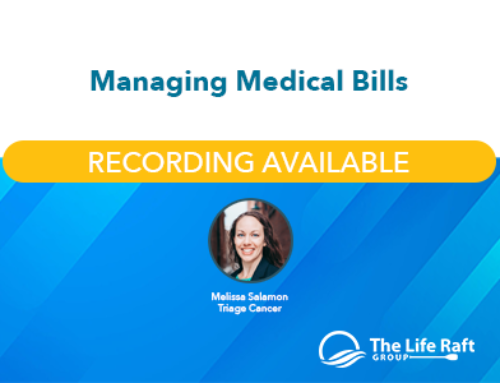Caution:It is important for patients to report side effects and discuss their management with their doctor. The material presented here is for information purposes only; it is not a substitute for talking to your doctor.
LRG Webcast:
The Superficial Side of GIST: Taking Care of Your Skin During Therapy
Presenter: Dr. Mario Lacouture, Director of the Cancer Skin Care Program at Northwestern University
Duration: 59 minutes. The introduction of new drugs such as Gleevec and Sutent, which target specific mechanisms involved in GIST, has resulted in remarkable improvements. Despite this success, a significant number of patients treated with these drugs will develop dermatological side effects, such as hand foot syndrome, dry skin, hair loss, and rashes, which lead to decreased quality of life and inconsistent drug administration. All of which may affect a person’s sense of well being and clinical benefit. Therefore, attentive dermatological care is critical for the optimization of GIST therapies and quality of life.
This presentation is not currently available
Rashes are a common side effect of Gleevec-induced rashes vary from mild to severe. Rashes occur more frequently in females and at higher doses with gender appearing to be the more important factor.
Rash varies in cause and treatment:
- Shingles (treated with antiviral, steroids makes it worsen)
- True Gleevec drug rash (most common)
- Heat sensitivity
- Fungal infection (ringworm, steroids may make it worsen)
- Cellulitis (requires an antibiotic)
Rashes may require referral to a dermatologist and are the most common side effect requiring permanent discontinuation of Gleevec.
Mild Rashes
Most cases are mild and self-limiting and are treatable with antihistamines or topical steroids.
Some of the remedies that patients have reported as effective are:
- Neutrogena anti-itch lotion
- Florisone
- Zyrtec
- Sarna cream
- Gold Bond medicated anti-itch cream
Moderate Rashes
Rashes of moderate severity may respond to oral steroids, such as prednisone (depending on the cause).
Severe Rashes
Depending on cause, severe rashes may require discontinuation of Gleevec and systemic steroids. After the rash resolves, Gleevec is often restarted with prednisone. The prednisone is then tapered off over the course of several weeks.
NOTE: This excerpt on dealing with severe rashes comes from “Practical Management of Patients With Chronic Myeloid Leukemia Receiving Imatinib”
By Michael W. N. Deininger, Stephen G. O’Brien, John M. Ford, and Brian J. Druker.
“In some patients, severe rashes develop with desquamative components, including a report of Stevens-Johnson syndrome. In such cases, immediate discontinuation of therapy and systemic steroids (eg, 1 mg/kg/d) are indicated. Severe skin reactions that were resistant to supportive measures were the most frequent cause for permanent discontinuation of imatinib therapy. However, the incidence of this event is small (1% of all patients). Depending on the clinical situation, it has been possible to restart imatinib after the rash has resolved. In these cases, prednisone has typically been given at 1 mg/kg/d, tapering to 20 mg per day over several weeks. Imatinib has been restarted at 100 mg per day and the dose increased by 100 mg per week while tapering the steroids, assuming that the rash has not recurred. This approach should only be considered in patients for whom no other treatment option exists other than imatinib.”
Other Skin Problems
Nerve Pain
A few patients have reported a sensation like “pins and needles” on their skin. Talk to your doctor about this type of symptom. They may indicate a type of nerve-related pain/damage. Some patients have reported relief from Neurontin. Note that Neurontin provides pain relief, but does not prevent nerve damage.
Dry Skin
Patients sometimes report very dry skin while taking Gleevec. Often this can be managed the same way that dry skin is normally managed. The Mayo Clinic has a good overview of dry skin causes and management. More severe cases (which are rare) require the help of your doctor or a dermatologist.
Your skin is protected by oils. If you remove the protective oils by bathing too often or using harsh soaps, your skin will be more prone to dry out. Some general suggestions to manage dry skin include:
- Short showers are better than baths.
- Use warm, not hot water.
- Avoid harsh soaps and detergents. Try mild cleansers like Aveeno or Cetaphil or mild soaps like Neutrogena or Dove.
- Moisturize after a bath when your skin is still damp and as often as needed.
- Avoid products with alcohol.
- Thick moisturizers work best.
- Use a humidifier if the air is dry (in winter); but don’t forget to clean it regularly.
- Drink plenty of water.
Thank you to LRG members for providing these tips.
Helpful Links:
Cutaneous Drug Reactions (Technical information about skin reactions caused by drugs) (Pharmacol Rev. 2001 Sep;53(3):357-79.
References
- Practical Management of Patients With Chronic Myeloid Leukemia Receiving Imatinib
By Michael W. N. Deininger, Stephen G. O’Brien, John M. Ford, and Brian J. Druker
J Clin Oncol 21. © 2003 by American Society of Clinical Oncology





